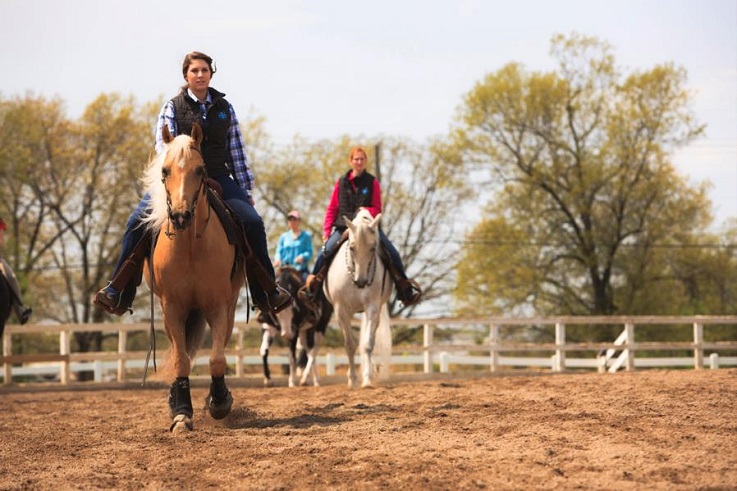5 ‘Who Knew?’ Facts about: Western
 This is Part 2 in our series highlighting interesting facts about each of the four disciplines equestrian studies students can pursue at William Woods University.
This is Part 2 in our series highlighting interesting facts about each of the four disciplines equestrian studies students can pursue at William Woods University.
Liz Haben, Western Clinical Instructor shared a few interesting facts about this seat, including where it came from and just how diverse the discipline can be.
1. Western riding evolved from cattle ranching. It’s also known as stock seat. The horns on western saddles were originally used to dally off a rope when a rancher caught their cow. Many ranchers still use their western saddle as a part of daily work and competitions such as team roping and calf roping have evolved from this. However, the western, or stock seat saddle, is most commonly used for recreational trail riding and then also for other competitive western events, which is what we do at William Woods University.
2. Several breeds represent the discipline of western riding at William Woods. These include: Quarter Horse, Arabian, Paint, Appaloosa, Morgan, National Show Horse, Saddlebred, Andalusian, Shire, Appendix Quarter Horse, Half-Arabian as well as color registries such as Pinto and Palomino.

3. Western riding encompasses many events of riding within this seat. For instance, our western riding equestrian students may come from different backgrounds ranging from western pleasure, hunter under saddle, reining, trail, working cow horse, horsemanship, showmanship, halter, equitation, barrel racing and so on. Our William Woods western horses each have their own specialty although many of our horses are all around horses that will compete in both western and hunt seat classes.
4. In all events of western riding a quiet, well-mannered horse is always desirable. At William Woods, our western students focus on quieting, or “desensitizing”, our horses through fun exercises like obstacle course desensitizing. We also offer ground training courses and colt starting courses that help to focus on training a quiet, mannerly horse.
5. There are many different types of competitions in which western riders and horses can compete. These range from open shows to breed shows. In the past few years William Woods western students have been very active in showing at both Arabian and Pinto shows bringing home multiple championships within both associations.
—
William Woods University equestrian students take coursework in equestrian business and management, science and understanding in every corner of the equine industry. Students can choose to specialize in one of four disciplines: Dressage, Hunter/Jumper, Saddle Seat and Western. This series features things you may not have known about these disciplines, and their history at William Woods.

